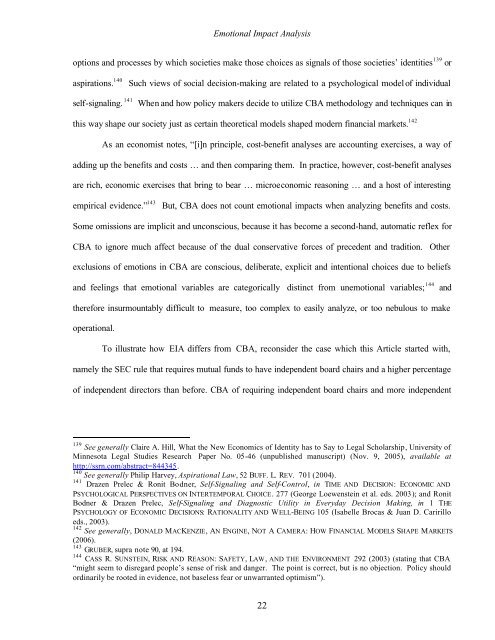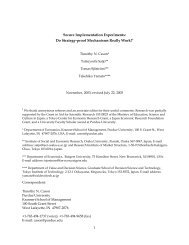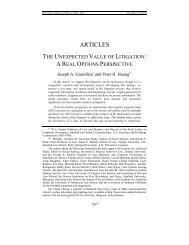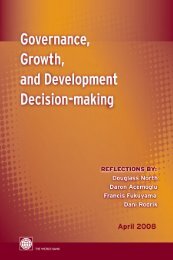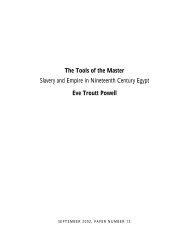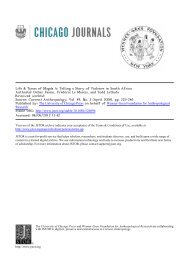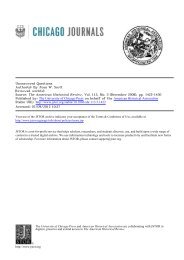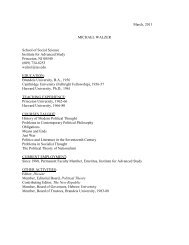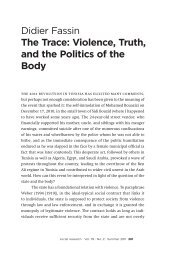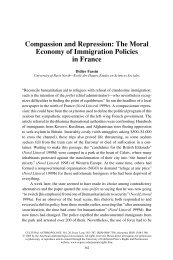Peter H. Huang Harold E. Kohn Chair Professor of Law James ...
Peter H. Huang Harold E. Kohn Chair Professor of Law James ...
Peter H. Huang Harold E. Kohn Chair Professor of Law James ...
You also want an ePaper? Increase the reach of your titles
YUMPU automatically turns print PDFs into web optimized ePapers that Google loves.
Emotional Impact Analysis<br />
options and processes by which societies make those choices as signals <strong>of</strong> those societies’ identities 139 or<br />
aspirations. 140 Such views <strong>of</strong> social decision-making are related to a psychological model <strong>of</strong> individual<br />
self-signaling. 141 When and how policy makers decide to utilize CBA methodology and techniques can in<br />
this way shape our society just as certain theoretical models shaped modern financial markets. 142<br />
As an economist notes, “[i]n principle, cost-benefit analyses are accounting exercises, a way <strong>of</strong><br />
adding up the benefits and costs … and then comparing them. In practice, however, cost-benefit analyses<br />
are rich, economic exercises that bring to bear … microeconomic reasoning … and a host <strong>of</strong> interesting<br />
empirical evidence.” 143 But, CBA does not count emotional impacts when analyzing benefits and costs.<br />
Some omissions are implicit and unconscious, because it has become a second-hand, automatic reflex for<br />
CBA to ignore much affect because <strong>of</strong> the dual conservative forces <strong>of</strong> precedent and tradition. Other<br />
exclusions <strong>of</strong> emotions in CBA are conscious, deliberate, explicit and intentional choices due to beliefs<br />
and feelings that emotional variables are categorically distinct from unemotional variables; 144 and<br />
therefore insurmountably difficult to measure, too complex to easily analyze, or too nebulous to make<br />
operational.<br />
To illustrate how EIA differs from CBA, reconsider the case which this Article started with,<br />
namely the SEC rule that requires mutual funds to have independent board chairs and a higher percentage<br />
<strong>of</strong> independent directors than before. CBA <strong>of</strong> requiring independent board chairs and more independent<br />
139<br />
See generally Claire A. Hill, What the New Economics <strong>of</strong> Identity has to Say to Legal Scholarship, University <strong>of</strong><br />
Minnesota Legal Studies Research Paper No. 05-46 (unpublished manuscript) (Nov. 9, 2005), available at<br />
http://ssrn.com/abstract=844345.<br />
140<br />
See generally Philip Harvey, Aspirational <strong>Law</strong>, 52 BUFF. L. REV. 701 (2004).<br />
141<br />
Drazen Prelec & Ronit Bodner, Self-Signaling and Self-Control, in TIME AND DECISION: ECONOMIC AND<br />
PSYCHOLOGICAL PERSPECTIVES ON INTERTEMPORAL CHOICE. 277 (George Loewenstein et al. eds. 2003); and Ronit<br />
Bodner & Drazen Prelec, Self-Signaling and Diagnostic Utility in Everyday Decision Making, in 1 THE<br />
PSYCHOLOGY OF ECONOMIC DECISIONS: RATIONALITY AND WELL-BEING 105 (Isabelle Brocas & Juan D. Caririllo<br />
eds., 2003).<br />
142<br />
See generally, DONALD MACKENZIE, AN ENGINE, NOT A CAMERA: HOW FINANCIAL MODELS SHAPE MARKETS<br />
(2006).<br />
143<br />
GRUBER, supra note 90, at 194.<br />
144<br />
CASS R. SUNSTEIN, RISK AND REASON: SAFETY, LAW, AND THE ENVIRONMENT 292 (2003) (stating that CBA<br />
“might seem to disregard people’s sense <strong>of</strong> risk and danger. The point is correct, but is no objection. Policy should<br />
ordinarily be rooted in evidence, not baseless fear or unwarranted optimism”).<br />
22


